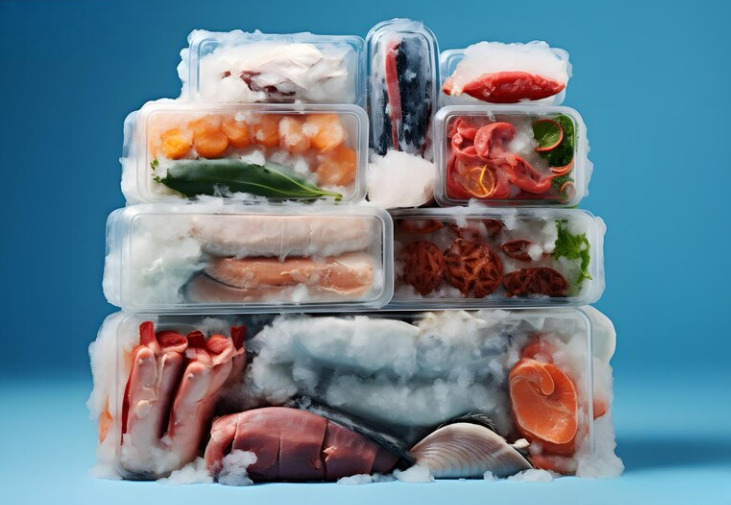In the fast-paced world of today, convenience is king. Be it grocery shopping or meal planning for the week, people consistently seek ways to save time without compromising on quality. This increasing demand has opened up the avenue for frozen food delivery — a modern solution crafted from ease, variety, and freshness, delivered to your doorstep. Frozen food delivery is fast becoming a newer-age essential with more and more households and businesses using the service.
What is Frozen Food Delivery?
Frozen food delivery is a service that brings various frozen goods — from vegetables and meal kits to gourmet meats and desserts — straight to your home (or workplace). These services, powered by e-commerce platforms or dedicated frozen food companies, promise to keep the food frozen from warehouse to the customer’s freezer. This process retains the quality, taste and nutritional value of the food coupled with uncomparable convenience.
The Rise of Frozen Food Delivery
There are various reasons frozen food delivery has become the go-to for many of today’s consumers:
Time-Saving Convenience
For busy professionals or families with hectic schedules, meal planning, grocery shopping, and cooking can take up significant time. Because frozen food delivery offers many ready-made or easy-to-cook options that require little to no prep work, it cuts out some of the intermediary steps in the cooking process. Soon you’ve filled your freezer with healthy, delicious meals for the whole week.
Extended Shelf Life
What the frozen food has the biggest advantage of is its long shelf life. Fresh produce or raw meats spoil quickly, but frozen items can last for months and still retain their taste and nutritional integrity. This reduces food waste and enables better budget management.
Variety of Choices
Today’s frozen food delivery services have an expansive menu for all tastes and dietary needs. From vegetarian and keto-friendly meals to exotic international cuisines and gourmet fare, there is something for everyone. Most services here let you customize your meal plans to suit your tastes and goals.
Nutritional Value and Quality
Now, the way we freeze food does a better job of maintaining its nutrients, flavors and textures than even before [source: Whitehead]. Frozen foods, for example, are flash-frozen at their peak, often making them more nutritious than fresh foods that embark on a long journey to your plate, languishing for days in transport and on store shelves. This access allows you to enjoy great meals while sacrificing little in terms of health.
Contactless Convenience
The COVID-19 pandemic has developed increasing demand for contactless delivery. Frozen food delivery is a hygienic and safe method of getting groceries without having to visit the crowded supermarket. Visiting retailers allowing no-contact drop-off due to health-conscious consumer concerns.
Who Should Use a Frozen Food Delivery Service?
It is just not for busy people — it appeals to a diverse clientele, including:
- People who work for a living and don’t have time to cook.
- Older adults who require convenience meals.
- People with active lifestyles seeking portion-controlled rich meals.
- Parents interested in quick and healthy meal ideas for children.
- Forms of people isolated in remote areas with limited access to produce.
Businesses, including restaurants and catering services, also benefit by using frozen ingredients to control costs and minimize waste.
How does frozen food delivery work?
Most frozen food delivery services have a similar model:
- Online Ordering: Customers review a catalog to choose frozen meals or ingredients.
- Packaging: Your items will be packaged in an insulated box with dryice or cold packs to keep your goods frozen in transit.
- Shipping & Delivery: Time of delivery, within 1–2 days, subject to the area.
- STORAGE: Also, upon arrival, customers are instructed to transfer IMMEDIATELY into their freezer for best results.
(Subscription services (you get a weekly or monthly delivery.) Some are on an as-need basis with more flexibility.
Major Players in the Frozen Food Delivery Market
A number of companies have found a niche in the frozen food delivery market. These include:
- Frozen Meals: Providing health- and flavor-focused, chef-prepared it.
- Daily Harvest: Offers plant-based frozen meals such as smoothies, soups and flatbreads.
- Factor and Trifecta Nutrition: Frozen, macro-balanced meals for fitness and health enthusiasts.
- Omaha Steaks: Home delivery of premium frozen meats & gourmet meals
Local and regional providers are also appearing, allowing for customer acumen and local diversity.
Frozen Food vs Sustainability in Delivery
Sustainability has become an increased priority for consumers, and a number of frozen food delivery services are answering the call. Businesses are finding ways to reduce their carbon footprint, whether it’s through recyclable and biodegradable packaging, or delivery routes optimized for the least emissions. Plus, since frozen foods last longer, they help cut down on food spoilage and waste — a win for customers and the planet alike.
How to Make the Most of Frozen Food Delivery
If you’re thinking about giving this service a spin, here are a few words of advice to help you get started:
- Read customer reviews to help you find a reliable and high-quality service.
- Choose a Plan: Some services allow for single meals, while others are bulk or subscription based.
- Pay attention to nutritional value, ingredients and portion sizes.
- Freezer Space: Check that your freezer has room to store your delivery.
- Get Ahead of the Game Use meal planning to add frozen items into your weekly diet.
Frozen Food Delivery: What Does the Future Hold?
Mirakl’s platformRevenue Stream: B2C, Consumer marketRevenue Stream: B2C, Consumer marketRevenue Stream: B2C, Consumer marketRevenue Stream: B2C, Consumer marketRevenue Stream: B2C, Consumer marketRevenue Stream: B2C, Consumer market the frozen food delivery market is expected to reach revenue of 1 billion USD in just a few years. The industry is adapting with technological advancements in food preservation, delivery logistics and personalization to meet the diverse needs of consumers. With the busy lifestyles taking over more and more, it will most likely be a household and business staple.
Further, as consumers discover the convenience and nutritional value of frozen foods, the stigma once attached to “TV dinners” is fading. Today’s frozen meals are chef-made, well-balanced and diet-specific, so frozen is no longer synonymous with inferior.
Conclusion
It is changing the way we eat, plan, and live. It’s a pragmatic solution for modern challenges — from time crunches and dietary preferences to food waste and sustainability. With an ever-expanding array of options and the bar being raised on quality, It has cemented itself as more than just a passing fad; it’s a new way to think about meal time.
So, it doesn’t matter if you are a busy professional, a health-conscious person, or someone who is seeking better meal options, it can be your miracle solution. Open your freezer to flavor and convenience and innovation.


